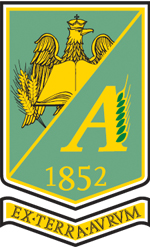Published in Scientific Papers. Series A. Agronomy, Vol. LXVI, Issue 2
Written by Mirela DRĂGAN, Monica ENACHE, Silvana Mihaela DĂNĂILĂ-GUIDEA, Ștefana JURCOANE
The present study describes the results of a pollen analysis carried out using light microscopy of a sample of bee pollen collected from a stationary apiary situated in the commune of Cornetu (Ilfov County) in October 2022, during a period with low temperature during the night, and after a summer characterized by very hot weather and severe drought conditions. To determine the preference of pollen sources by the honey bee colony, identification of melliferous plants in the apiary vicinity and up to the periphery of the commune of Cornetu was carried out. Cultured crops such as artichoke, buckwheat, cabbage, common vetch, mustard, phacelia, rape and several autumn-flowering garden plants were blooming at the moment when the current study was carried out. Also, uncultivated areas colonized by allergenic plants were identified in the foraging area around the beehive. After sorting the pollen pellets based on colour, the results indicated several origins of pollen, including pollen of Brassicaceae, Asteraceae, Rosaceae, Portulaca and also pollen of the highly allergenic anemophilous species ragweed - Ambrosia artemisiifolia, known as a popular source of pollen for bees.
[Read full article] [Citation]




